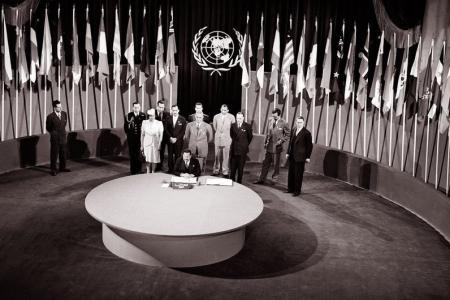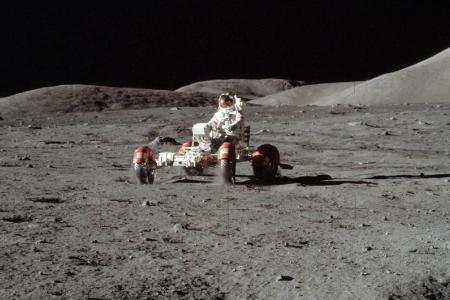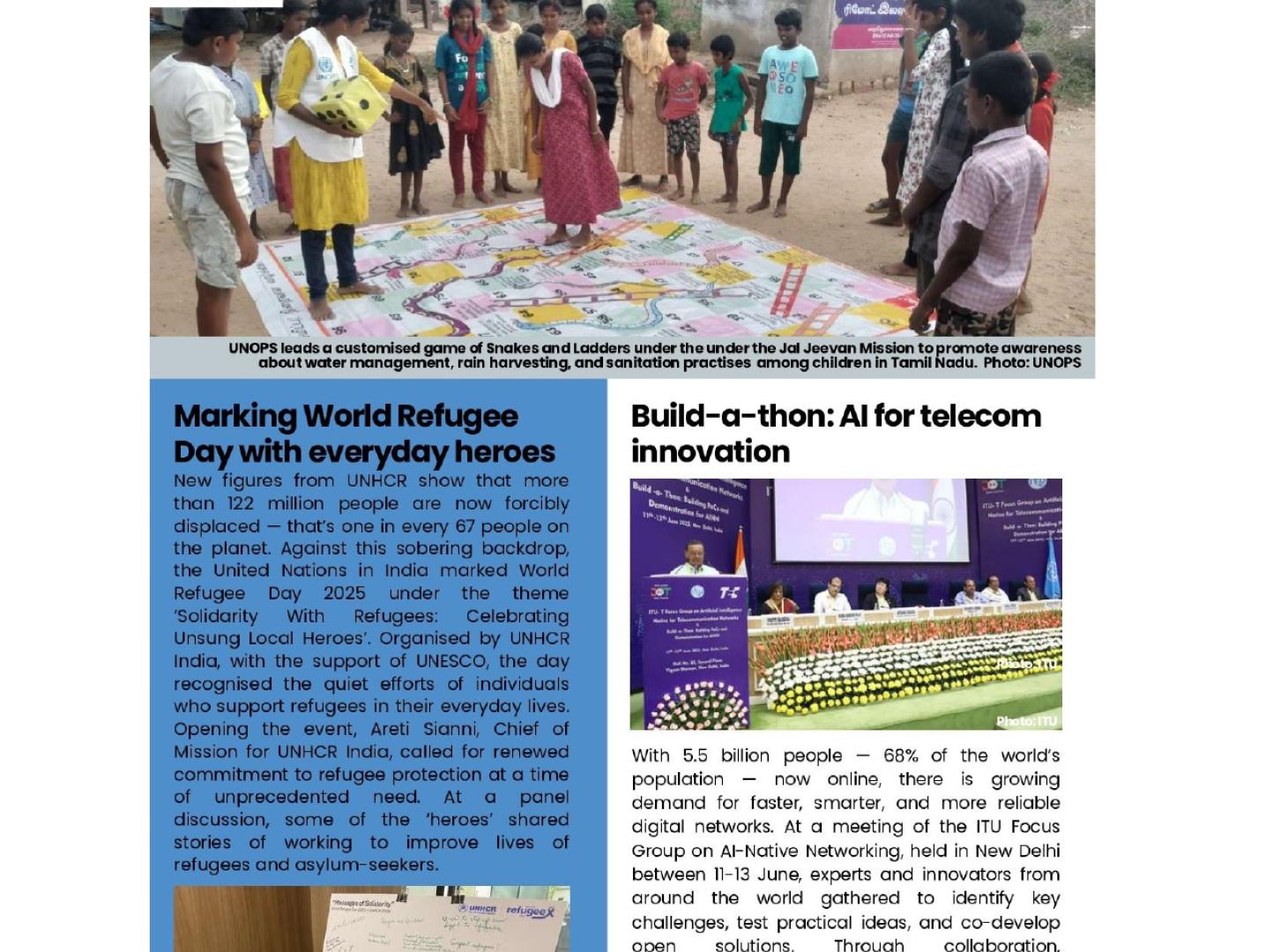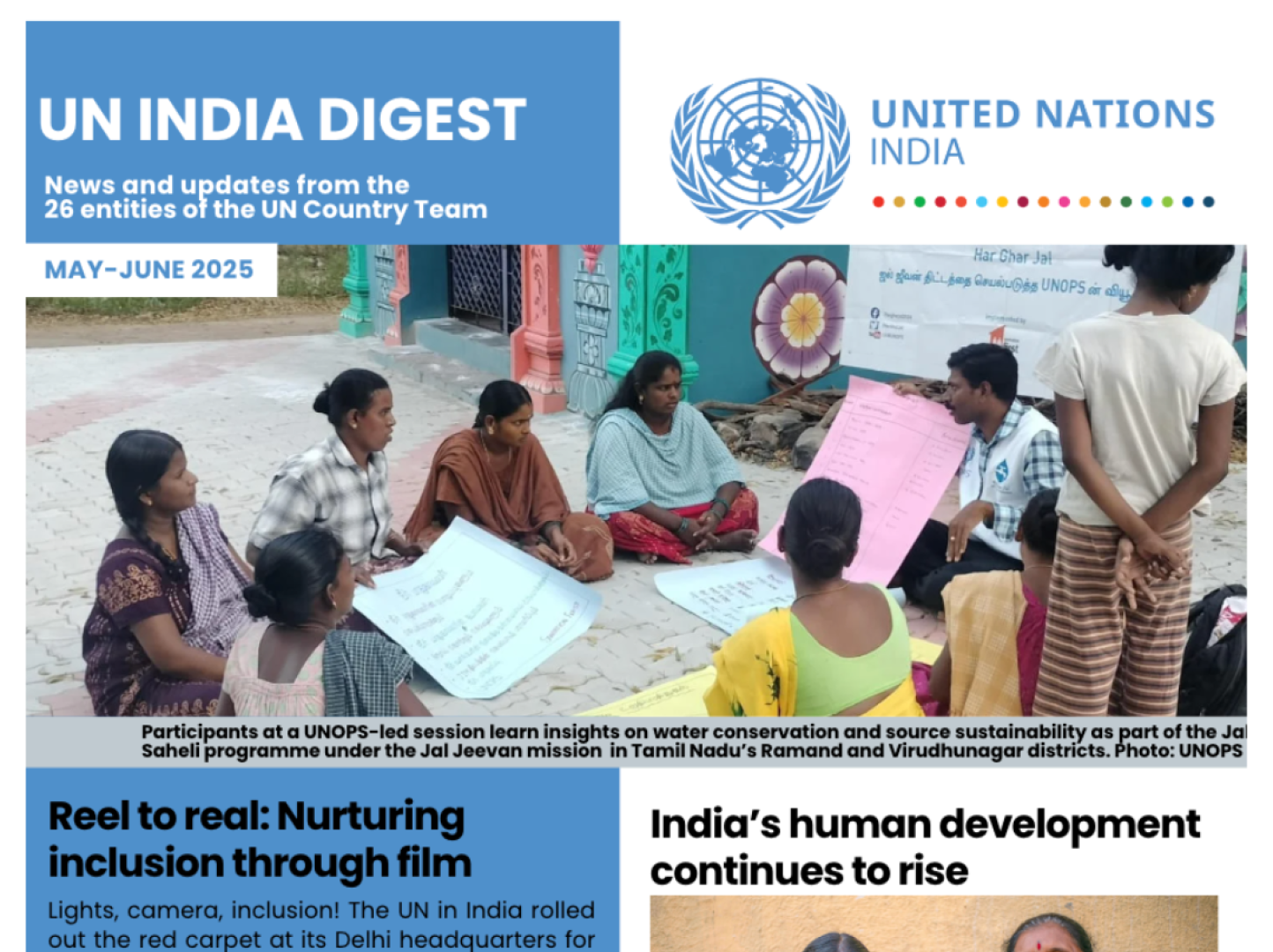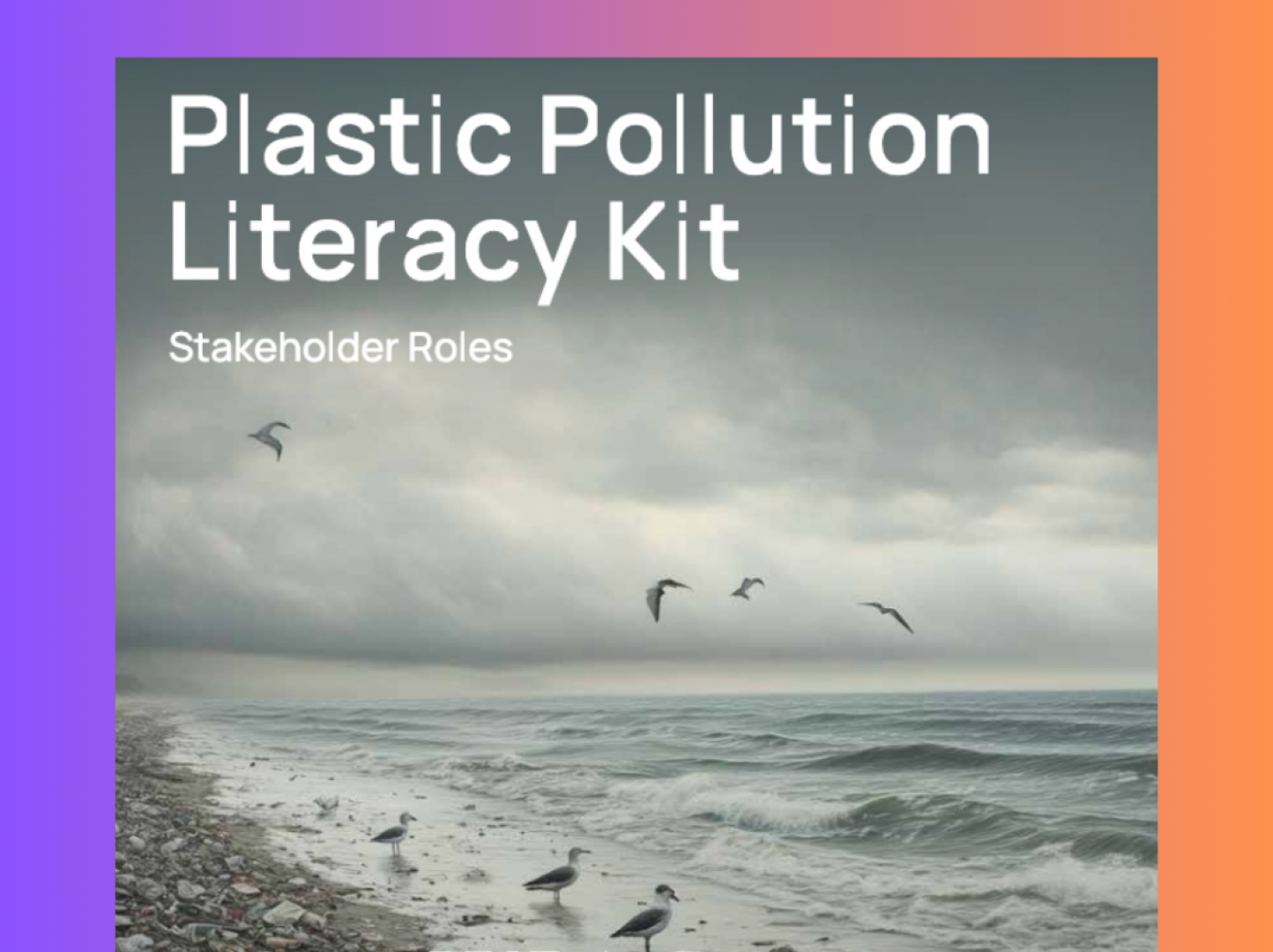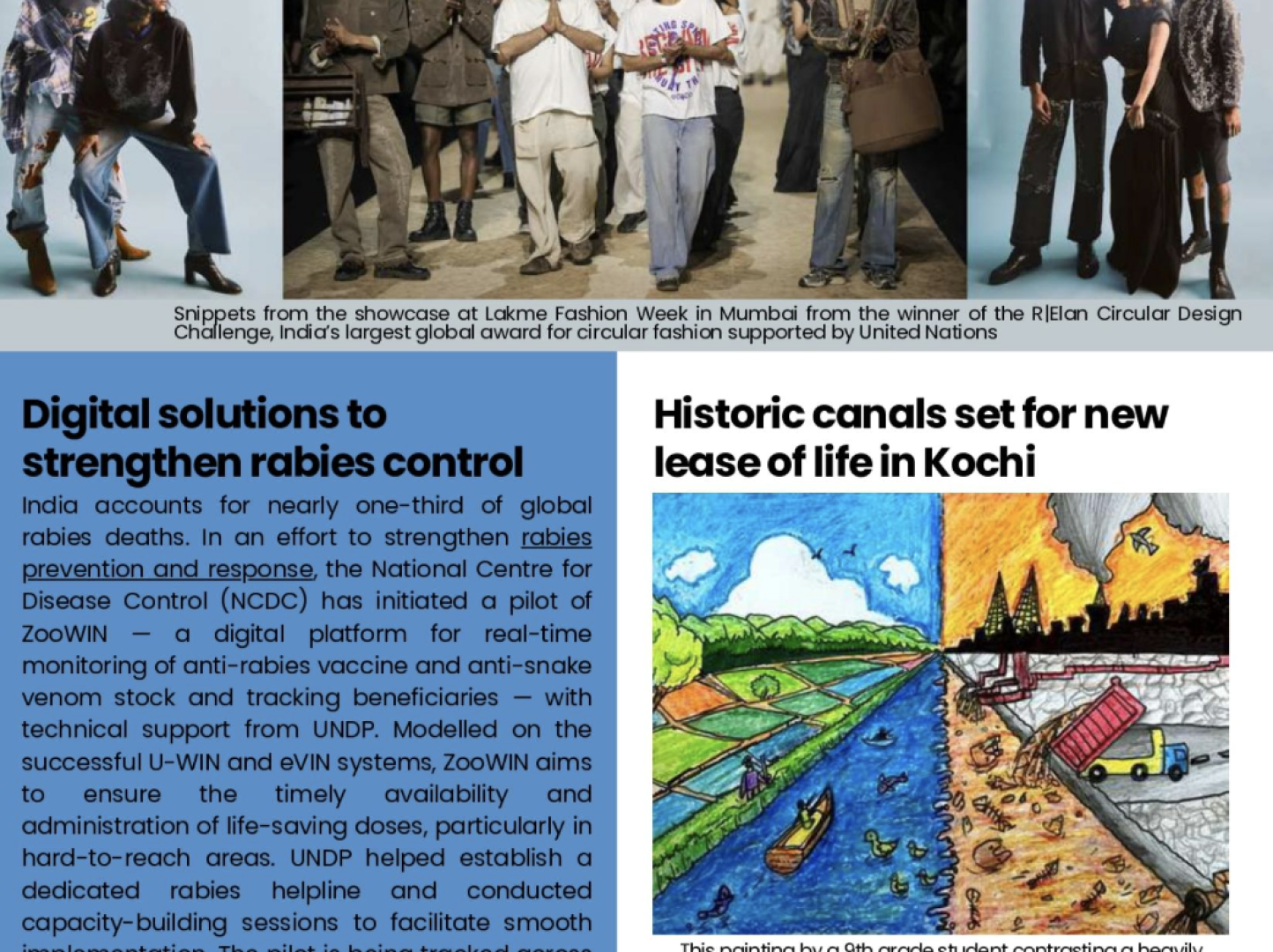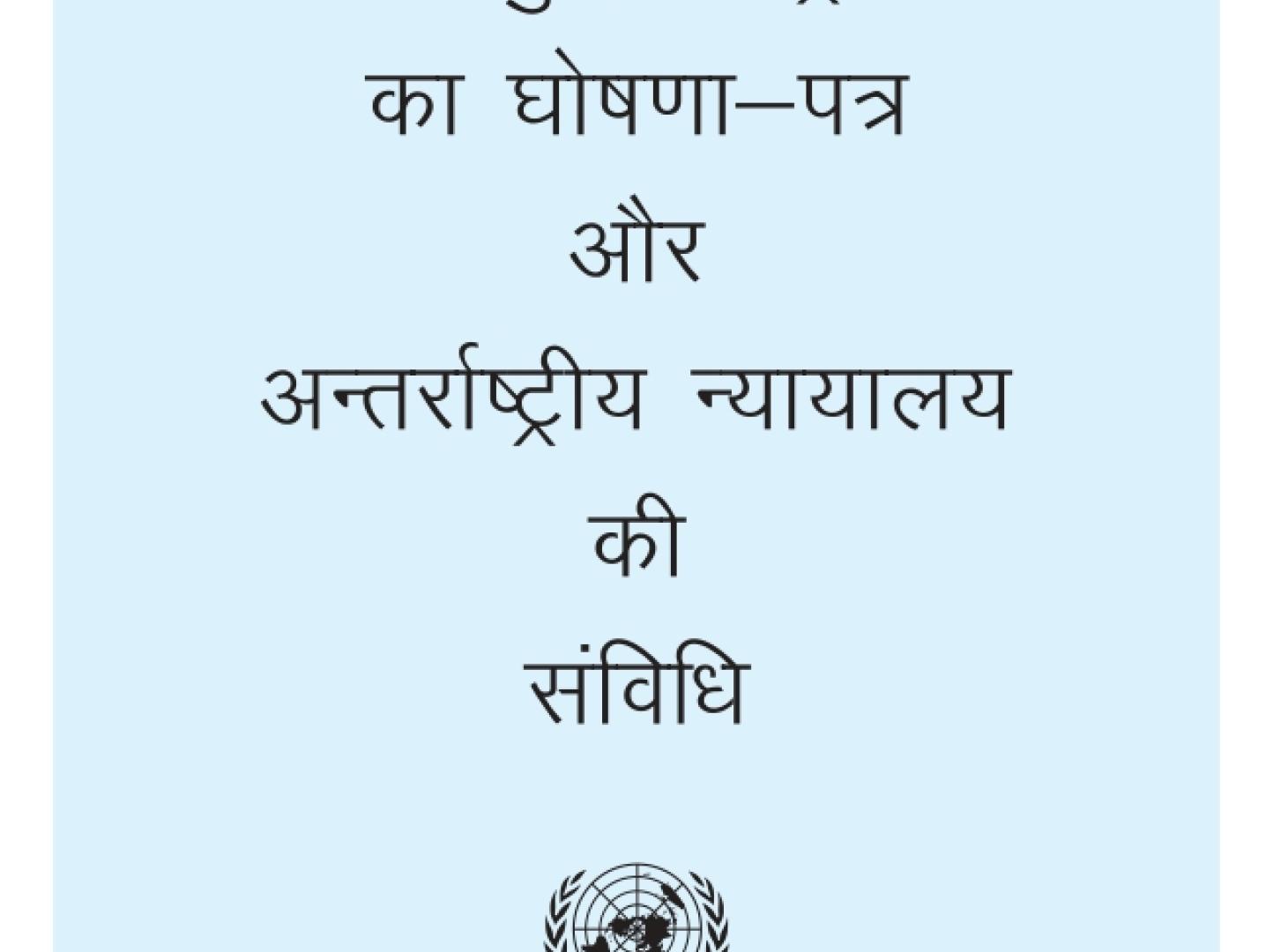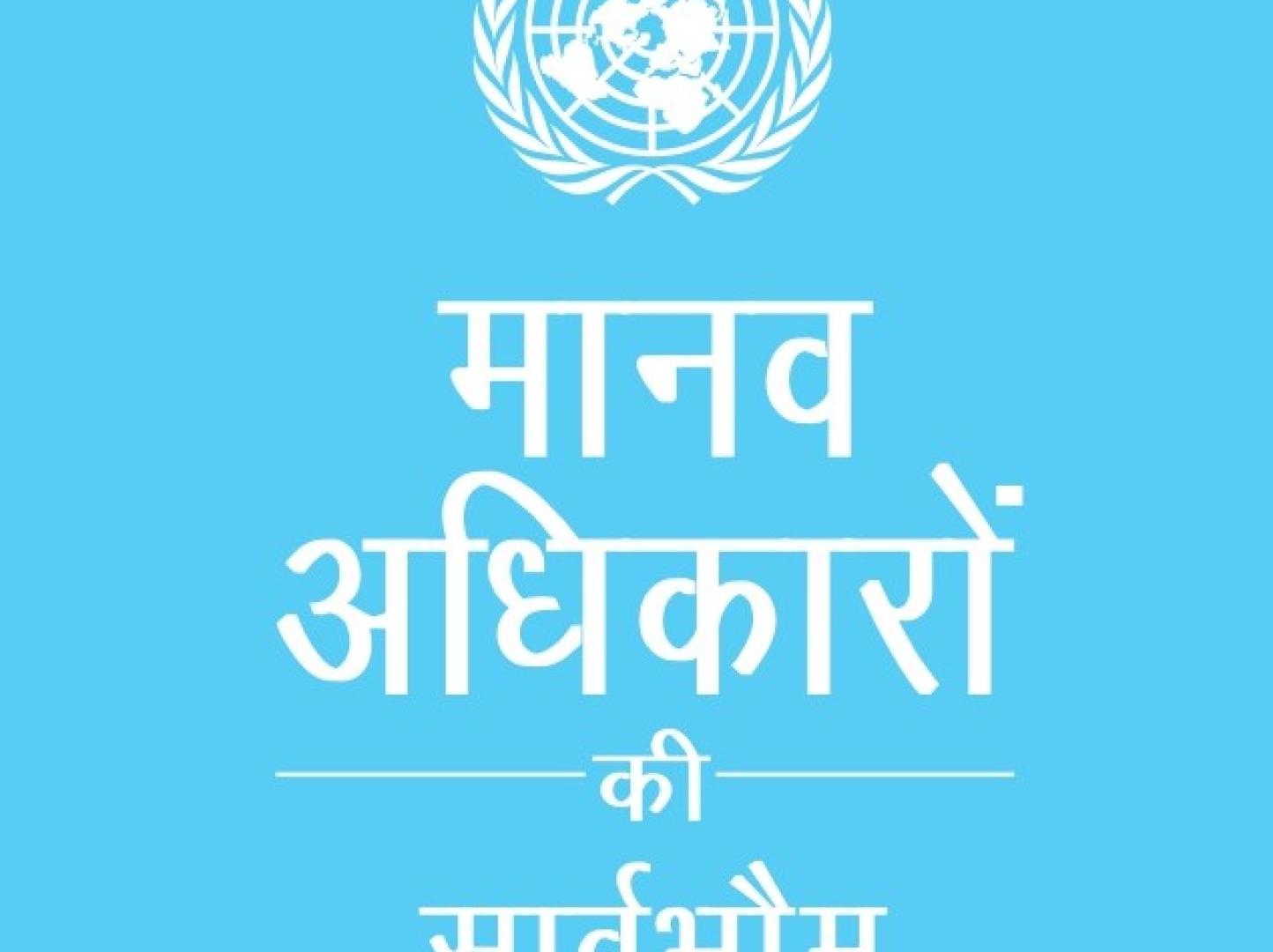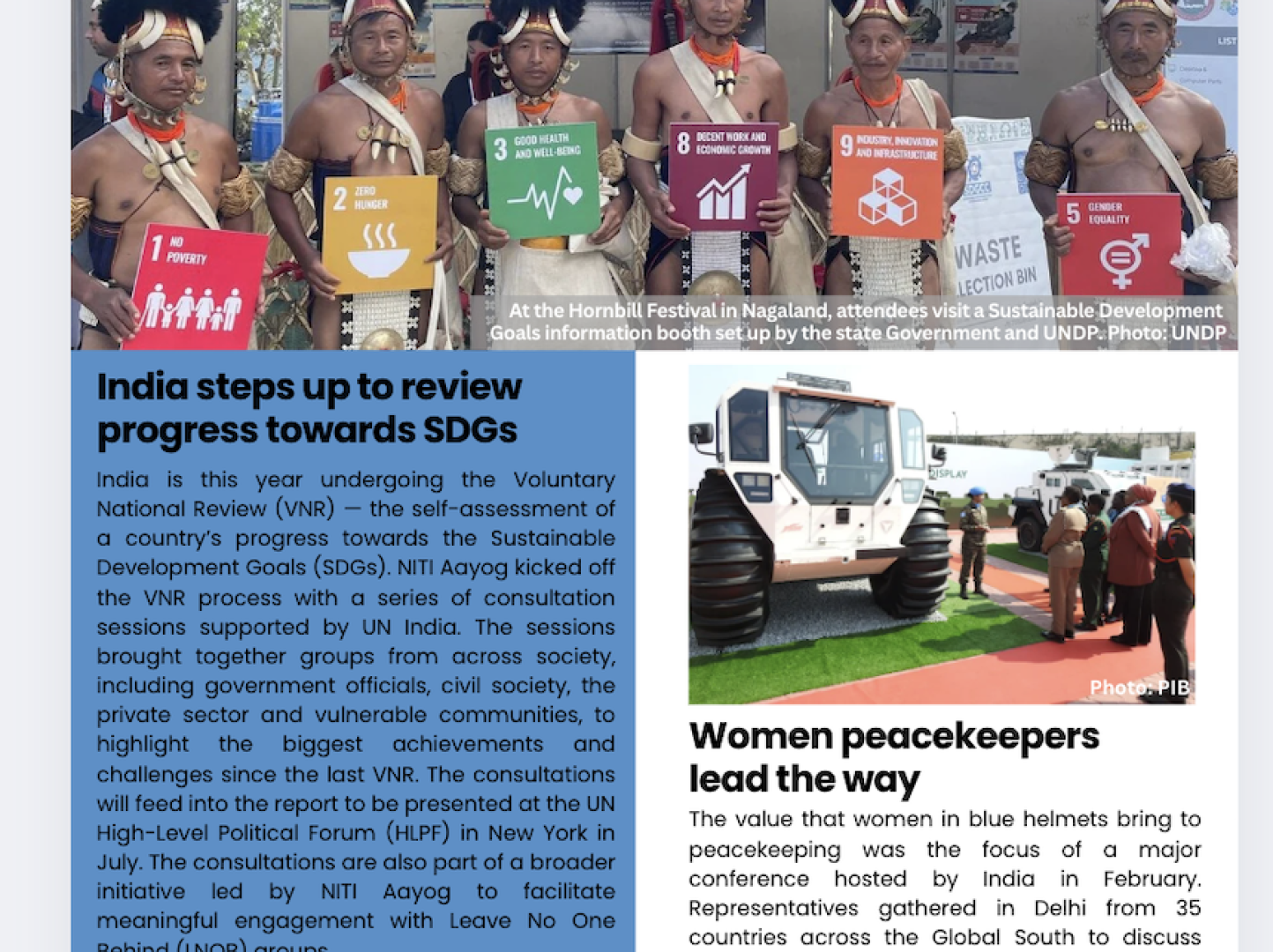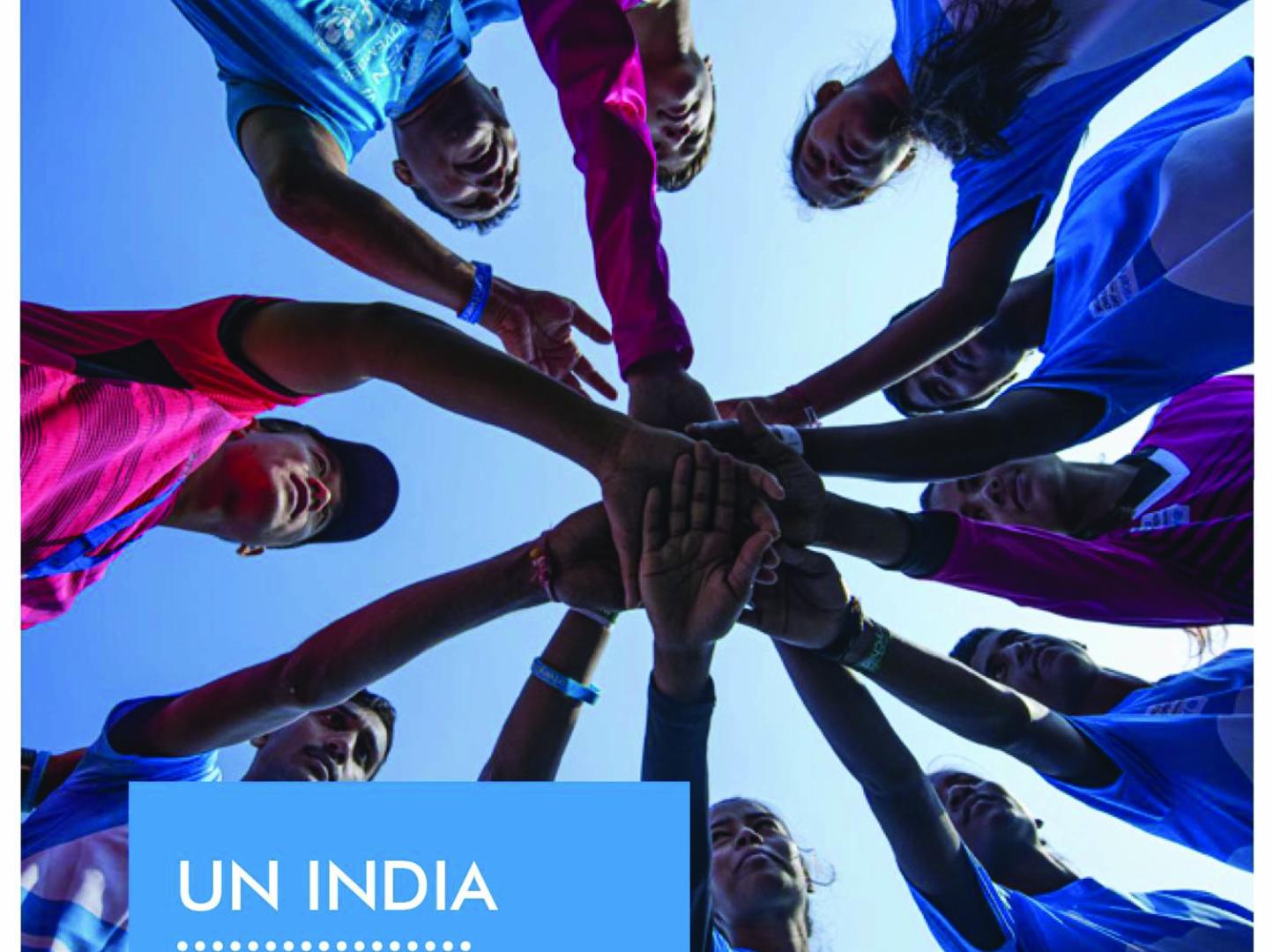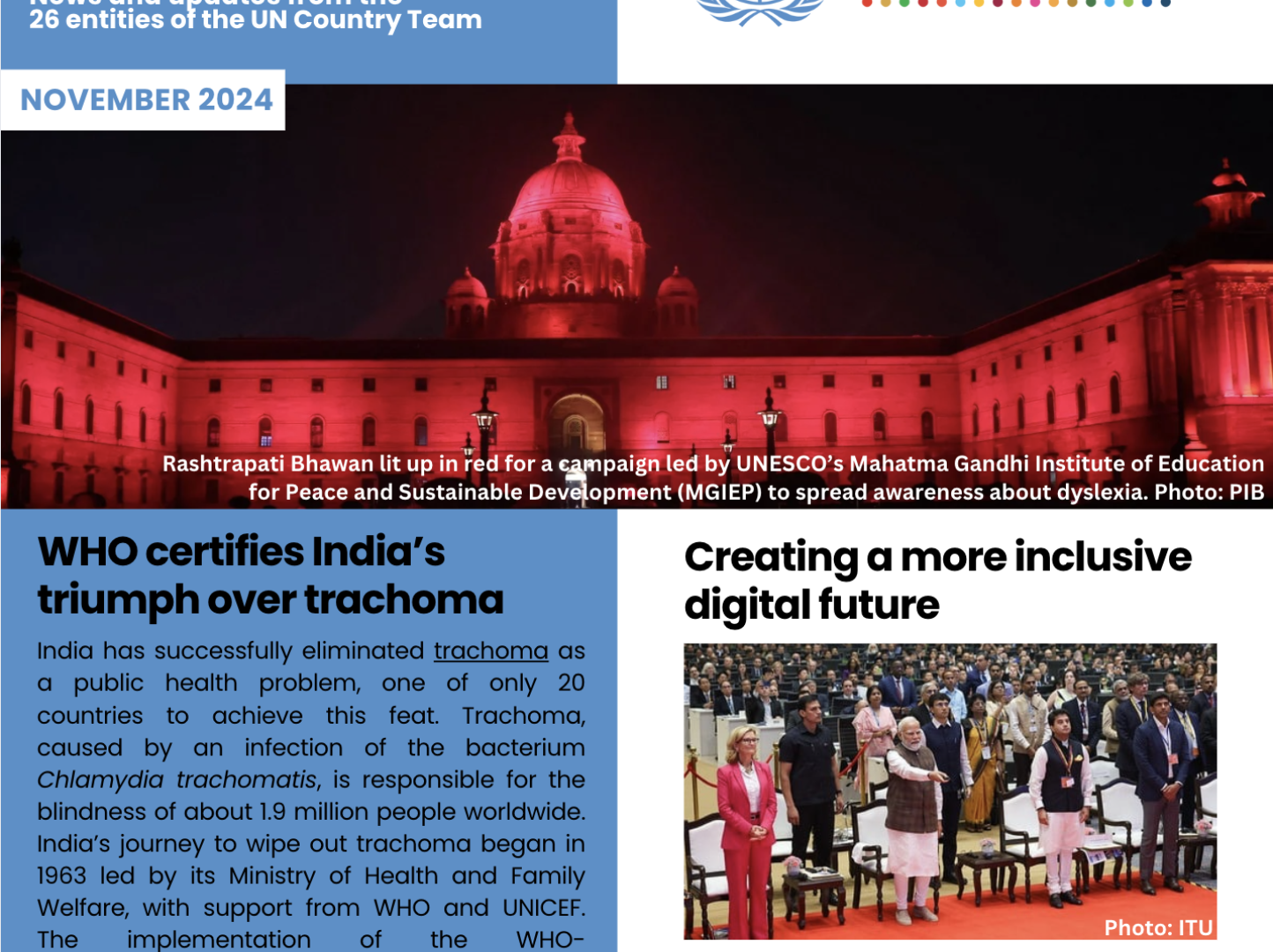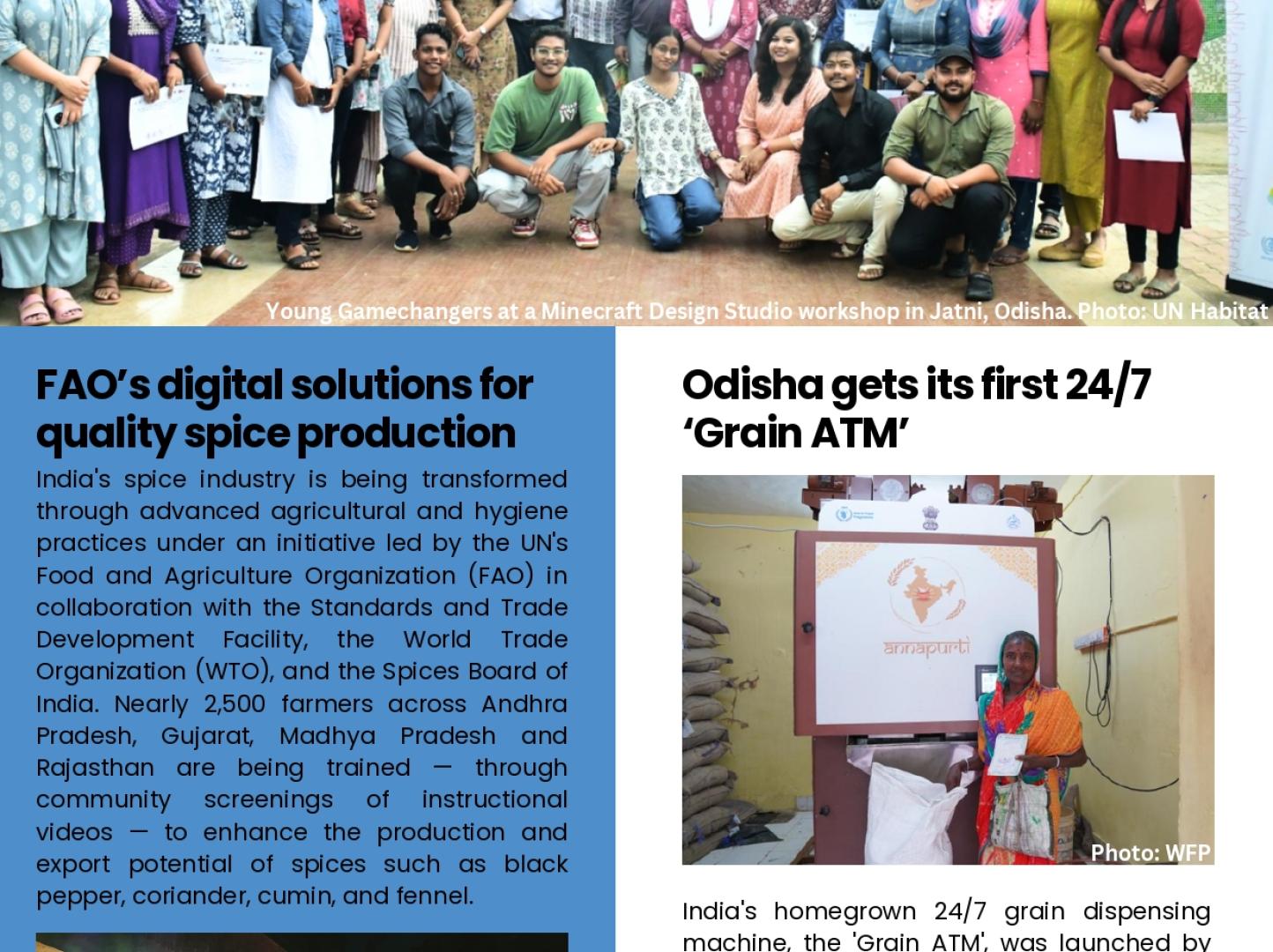Latest
The Sustainable Development Goals in India
India is critical in determining the success of the SDGs, globally. At the UN Sustainable Development Summit in 2015, Prime Minister Narendra Modi noted, “Sustainable development of one-sixth of humanity will be of great consequence to the world and our beautiful planet. It will be a world of fewer challenges and greater hope; and, more confident of its success”. NITI Aayog, the Government of India’s premier think tank, has been entrusted with the task of coordinating the SDGs, mapping schemes related to the SDGs and their targets, and identifying lead and supporting ministries for each target. In addition, the Ministry of Statistics and Programme Implementation (MoSPI) has been leading discussions for developing national indicators for the SDGs. State governments are key to India’s progress on the SDGs as they are best placed to ‘put people first’ and to ensuring that ‘no one is left behind’. The UN Country Team in India supports NITI Aayog, Union ministries and state governments in their efforts to address the interconnectedness of the goals, to ensure that no one is left behind and to advocate for adequate financing to achieve the SDGs.
Publication
08 July 2025
UN in India Digest June 2025
In this edition of the UN India Digest, #TeamUNinIndia takes you through some of the impactful work we've been part of this past month. From driving AI innovation in telecom networks to supporting inclusive urban planning in Odisha, and tackling plastic pollution in India, learn more about our work to deliver on the Sustainable Development Goals.
1 of 4
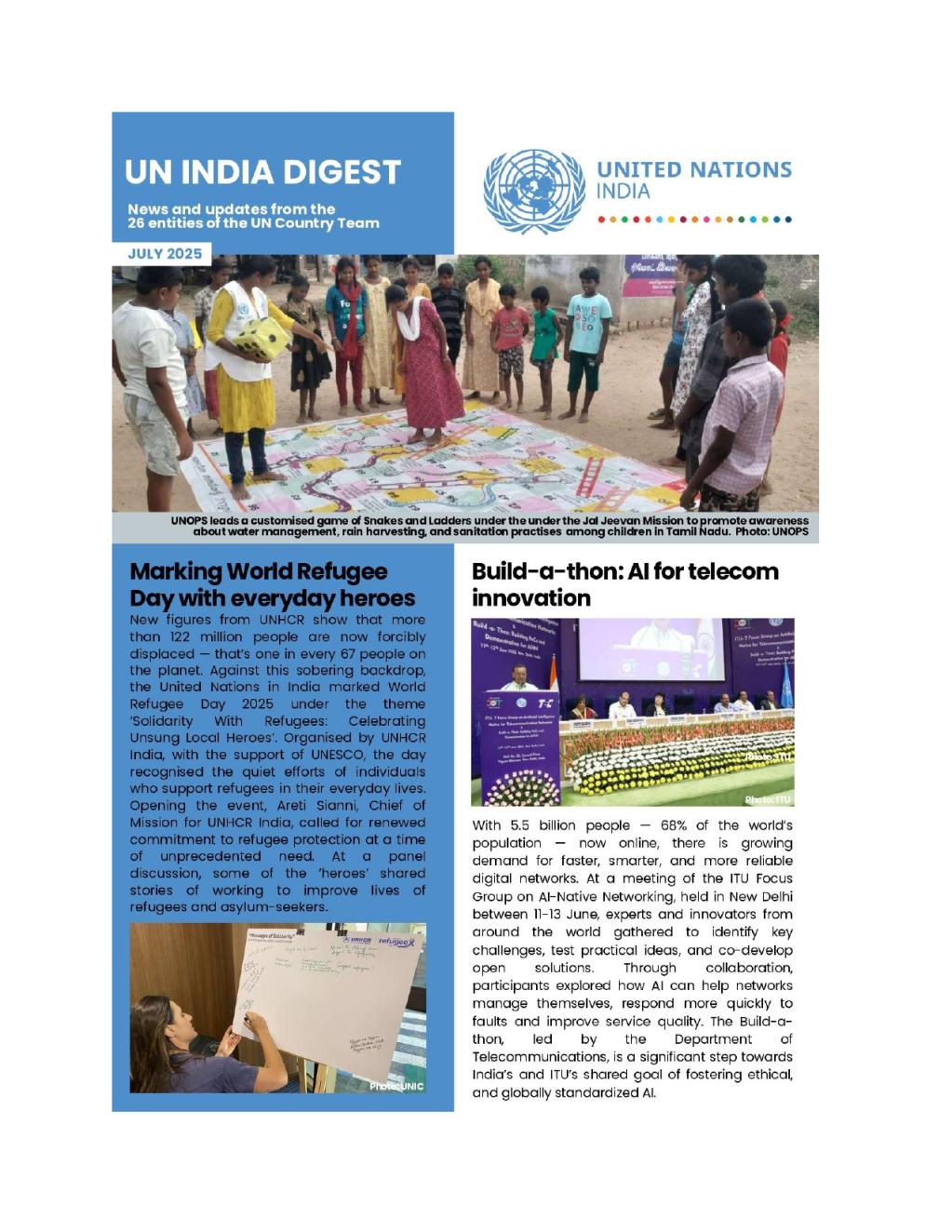
Speech
02 January 2025
Celebrating the dynamic UN-India partnership!
As we step into the New Year, it is a moment to both reflect and look forward. From breakthroughs in public health and food security to major advances in poverty reduction, technology and climate action, 2024 has proven to be another transformative year in India – as it has been for us at the United Nations in India, all 26 entities partnering with government, civil society and business across every State and Union Territory, as well as with our international development partners. Fresh off hosting the G20 presidency last year, India reinforced its role as a leading ‘voice of the Global South,’ driving international discourse on climate justice, food security and health equity among other issues central to the Sustainable Development Goals. In an era of deep political polarization and tensions worldwide, it also demonstrated the strength and resilience of its democracy, the world’s largest, with more than 640 million people voting in the national election. In parallel, India hosted major UN gatherings on key multilateral issues old and new. At the 2024 ITU World Telecommunication Standardization Assembly, held in New Delhi, new global agreements were reached on critical issues such as artificial intelligence (AI), sustainability and digital governance. With a strong focus on digital public infrastructure and emergency communications, India is at the forefront of setting digital standards that will impact the world for years to come.
The country’s cultural heritage shone brightly on the global stage as India played host to the annual UNESCO World Heritage Committee meeting for the first time. Notably, Assam’s moidams — the Mound-Burial System of the Ahom Dynasty — became India’s 43rd site on the World Heritage List.
On the ground, too, 2024 saw significant innovations across the country tackling India’s most pressing challenges with the UN proud to play a role. For example, Odisha launched a new 24-hour ‘Grain ATM’, a collaboration between WFP and the State Government. This technological advancement streamlines the public distribution system, reducing waiting times and ensuring that the most vulnerable have greater food security. UN Women led collective action on gender equality, globally the ‘unfinished business of our time’ in the words of the UN Secretary-General, while ILO convened the system to help unleash India’s unequalled potential demographic dividend.
Another major milestone was reached with India formally declaring the end of trachoma as a public health problem, overcoming one of the leading global causes of blindness. By implementing the WHO SAFE strategy — targeting treatment, prevention, and hygiene — India dramatically reduced infection rates. This success underscores the power of coordinated efforts between government, health-care workers, and international partners. India’s digital public infrastructure continues to set global benchmarks. The U-WIN platform, supported by UNDP, has been instrumental in modernizing vaccine distribution, ensuring accessibility and equity in immunization. This leap builds on previous successes like eVIN and CoWIN, and links with work of WHO and UNICEF, strengthening India’s ability to respond to public health challenges both now and in the future.
This year saw the update and release of the India’s National Biodiversity Strategy and Action Plan (2024-2030) supported by UNDP. This strategic plan aims to set nature on a recovery trajectory by embracing a 'whole-of-government' and 'whole-of-society' approach.
The UN family in India also celebrated several milestones in 2024. UNICEF marked 75 years of programming in the country to improve the health, safety and rights of children, while UNFPA commemorated 50 years, having contributed significantly to advancing sexual and reproductive health, especially for women and girls.Inclusion remained a central theme of the UN’s work in India this year. A joint non-discrimination statement on the employment of persons with disabilities was signed by all 26 UN agencies operating in the country.We formed a Multilateral Coordination Group with the government to bring together UN agencies, tailor programs for the welfare of persons with disabilities, and adapt global best practices to the Indian context.
As we approach the UN’s 80th anniversary next year, the momentum gained this past year will be crucial in advancing the initiatives outlined in the Pact for the Future that was adopted by all UN Member States, including India, at UN Headquarters in September. This landmark agreement, along with its key annexes — the Global Digital Compact and the Declaration on Future Generations — reflects a global commitment to building a peaceful, sustainable, and inclusive future, and to making the UN more effective and relevant for dealing with tomorrow’s challenges. India’s leadership in adopting and advancing these resolutions, particularly in strengthening South-South cooperation and prioritizing the voices of youth, will be vital in shaping the future.
Across six outcome groups of the Cooperation Framework, the UN in India has consistently driven impactful results through collective action and partnerships. Just a few of the highlights include:Health and well-being: Through the U-WIN platform, over 17 million pregnant women and 59 million children have been digitally registered, and more than 264 million vaccine doses have been tracked.Nutrition and food security: More than 12.3 million Indians, including children and breastfeeding mothers, received nutritious fortified foods.Quality education: We helped train 18,000 teachers as Health and Wellness Ambassadors across 26,000 schools spanning 33 districts.Economic growth and decent work: Conducted health and safety training to improve the working conditions at nearly 300 tea-growing estates.Environment, climate, WASH, and resilience: 2.9 million tons of CO2 emissions reduced through energy conservation and climate-friendly initiatives Empowering people, communities, and institutions: Supported the government in expanding gender-responsive budgeting in six states, leading to increased funding for women’s empowerment and gender equality.One of the standout moments of 2024 was when Major Radhika Sen from the Indian Army, serving as an Indian peacekeeper in the Democratic Republic of Congo, received this year’s UN Military Gender Advocate of the Year Award.
Additionally, the fourth edition of the SDG India Index produced by NITI Aayog with support from the UN showed India’s score rising to 71 out of 100, up from 66 in the previous edition.As we enter 2025, the race to achieve the SDGs enters a critical phase. With only half of the Decade of Action left, the urgency is unmistakable. This year has demonstrated the power of purpose and partnerships. From safeguarding cultural heritage to pioneering advancements in technology, India is showing how nations can drive sustainable growth while addressing global challenges. The United Nations, a humble partner working alongside India in this journey, remains committed to ensuring that progress benefits everyone. As I could not have begun to fully cover here the wide range of collaborations in which the UNCT is engaged, please have a look at our monthly newsletters on our website, or the annual report which will be issued within the first quarter of 2025, for more exhaustive stories of our work. The path ahead is steep, but with shared resolve, a more equitable and sustainable future is within reach. India is uniquely positioned among nations to accelerate development results at a scale and pace sufficient to give the global SDG push a vital boost, and with it optimism towards 2030.On behalf of the UN in India family, I am pleased to share our deep appreciation for your partnership in the year that was, and in anticipation of the important collective path ahead.Dhanyavaad!Shombi Sharp
United Nations Resident Coordinator, India
1 of 4
Story
15 January 2025
WMO joins IMD’s 150th celebration
India recorded its hottest year on record in 2024, with extreme heat impacting human health, agriculture, water resources, and energy. Celeste Saulo, Secretary-General of the World Meteorological Organization (WMO), highlighted these challenges during the 150th anniversary celebrations of the India Meteorological Department (IMD) on 14 January. The event, attended by Prime Minister Narendra Modi and Minister of Earth Sciences Jitendra Singh, celebrated IMD’s achievements and introduced Vision-2047, aimed at making India a climate-resilient nation by the time it celebrates 100 years of independence.“We aim to modernise meteorology and reduce weather-related fatalities,” Modi said. “This Vision will contribute to a sustainable future.”Saulo praised IMD’s role in disaster risk reduction and its support to sectors such as agriculture, water resource management, and public health.“IMD’s legacy has significantly enhanced India’s resilience and contributed to global efforts,” she said.India, a founding member of WMO since 1950, has been represented on its Executive Board for over 60 years, longer than any other country in the Asia-Pacific region. IMD’s role in severe weather forecasting, flash flood warnings, and seasonal climate outlooks was also acknowledged. “Accurate forecasts and coordinated disaster management have saved countless lives,” Saulo remarked, noting that IMD’s commitment to early warning systems aligns with WMO’s Early Warnings for All campaign to safeguard people from extreme weather worldwide.
1 of 4
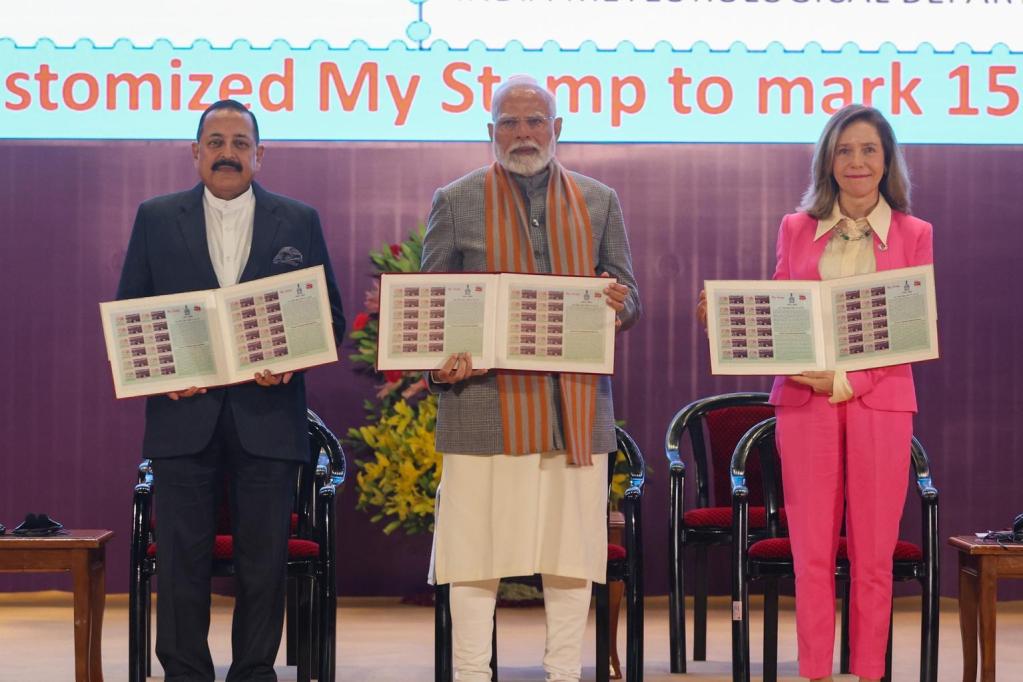
Story
16 October 2024
Global conference begins on future of digital tech standards
Thousands of tech experts, industry leaders, policymakers, researchers and government officials have gathered in New Delhi for a global United Nations-run conference on the future of technology standards. The World Telecommunication Standardization Assembly (WTSA) formally opened on 15 October in the capital’s Bharat Mandapam venue with an opening ceremony featuring Indian Prime Minister Narendra Modi. WTSA, taking place in the Asia-Pacific region for the first time, runs until 24 October. It is being held alongside the India Mobile Congress. Held every four years, WTSA sets out priorities for experts around the world who work year-round to develop the standards established by the UN’s International Telecommunication Union (ITU). The assembly’s opening heard calls for universal connectivity, the need for ethical artificial intelligence (AI) and how digital inclusion can make a meaningful difference to people’s lives.
In his remarks, Mr. Modi stressed that “security, dignity and equity” are the principles on which discussions at the assembly and congress should be based.
“Our objective should be that no country, no region and no community should be left behind the in this digital era,” he said.
ITU Secretary-General Doreen Bogdan-Martin said the world had a lot to learn from what India has already accomplished with its digital public infrastructure. “This global gathering calls for bold, collective action. In the next 10 days, we can strengthen the role of international standards as the bedrock of global digital governance,” she said.
ITU's standardization work is driven by the contributions and consensus decisions of the agency’s membership, which includes 194 Member States and more than 1,000 member companies, universities, and international and regional organizations.
WTSA reviews the strategy, structure and working methods of ITU's standardization arm every four years. It also approves the mandates and appoints the leadership teams of expert groups for international standardization.
***
In his remarks, Mr. Modi stressed that “security, dignity and equity” are the principles on which discussions at the assembly and congress should be based.
“Our objective should be that no country, no region and no community should be left behind the in this digital era,” he said.
ITU Secretary-General Doreen Bogdan-Martin said the world had a lot to learn from what India has already accomplished with its digital public infrastructure. “This global gathering calls for bold, collective action. In the next 10 days, we can strengthen the role of international standards as the bedrock of global digital governance,” she said.
ITU's standardization work is driven by the contributions and consensus decisions of the agency’s membership, which includes 194 Member States and more than 1,000 member companies, universities, and international and regional organizations.
WTSA reviews the strategy, structure and working methods of ITU's standardization arm every four years. It also approves the mandates and appoints the leadership teams of expert groups for international standardization.
***
1 of 4
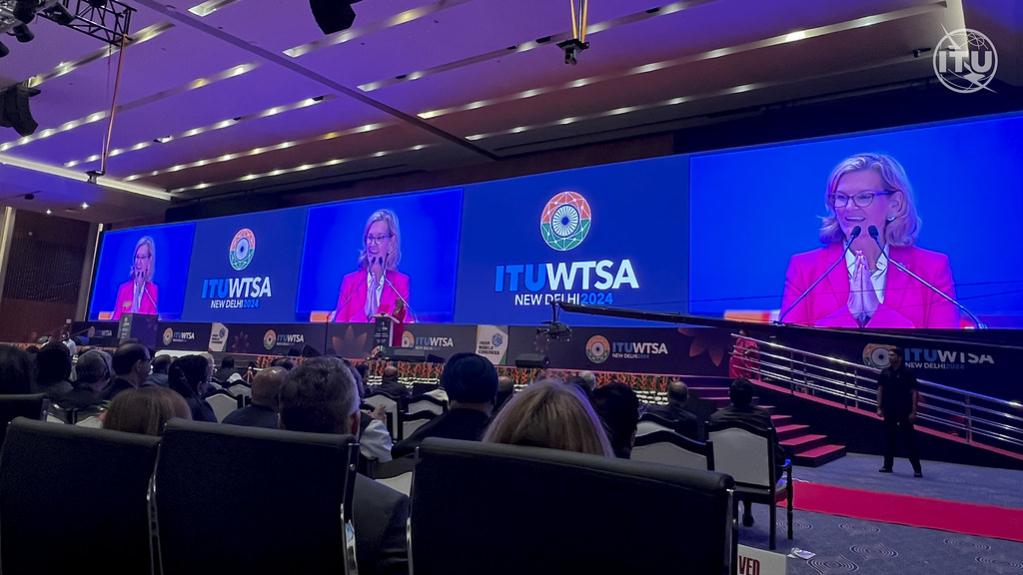
Story
26 June 2025
80 years later, the UN Charter is a ‘living miracle,’ Secretary-General says
In front of a multimedia exhibit at United Nations Headquarters entitled “Reviving the Spirit of San Francisco,” Secretary-General António Guterres welcomed home the UN Charter which was signed in 1945 in the Californian city. The UN Charter "is more than parchment and ink; it is a promise – of peace, dignity and cooperation among nations,” the Secretary-General said.Almost 80 years after it was signed, Mr. Guterres underlined that the Charter was just the beginning, enshrining ideas and principles which the world works to implement on a daily basis.Born from warIn the wake of the Second World War, representatives from almost 50 nations convened in San Francisco to put together an organization committed to the idea of “never again” — never again would a war of this magnitude devastate the world.Instead, the world would choose peace and diplomacy, equality and prosperity.“For a world mired in endless cycles of conflict and human suffering, the Charter and the principles it represented – dialogue, diplomacy, cooperation, and solidarity — was a path to a better, more peaceful, and prosperous future,” said UN General Assembly President Philémon Yang. The Charter was signed on 26 June 1945, almost exactly 80 years ago. However, it did not take effect until 24 October 1945 after the signatories’ legislative bodies had ratified it.The Charter, which is considered an international treaty, is a legal instrument which binds all Member States to the principles and commitments laid out within it. Since its ratification, the UN Charter has paved the way for other landmark international agreements including the 1948 Universal Declaration of Human Rights and the 2024 Pact for the Future.“The decades since have only proven the Charter’s enduring legacy. It has shaped decades of progress — guided international action on decolonisation, protected human rights and promoted justice and sustainable development,” said Mr. Yang.‘A living miracle’The exhibit contextualizes the Charter as a document from the past which continues to live in our present and will help shape the future.“As we look ahead, we would be wise to remember our past, celebrate our successes and build our future on the foundation of the UN Charter,” Mr. Yang said.Mr. Guterres said that this exhibit is a moment for people to reflect on the artifacts of the UN’s founding — to see the photos, the videos and the documents which have shaped this global organization.He acknowledged that while the world faces new challenges like climate change and technology, in addition to age-old challenges, the UN Charter can be a guiding force if the world is willing to carry the spirit of the Charter and its commitment to peace into the future.“The UN is a living miracle — and the women and men of the United Nations bring this miracle to life every day and everywhere,” the Secretary-General said. Adapted from UN News
1 of 5
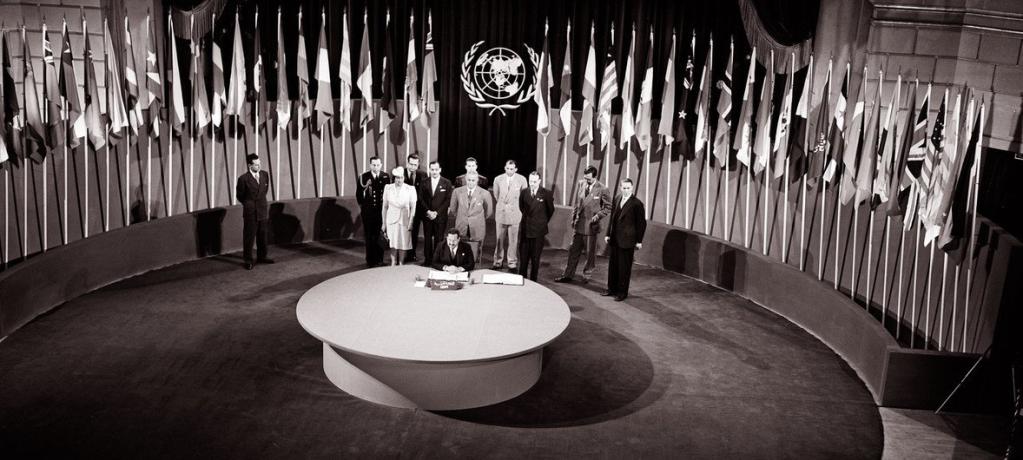
Story
24 June 2025
What time is it on the Moon? It’s all relative…
Telling the time on the Moon is more complicated than you might think, but answering the question is becoming more important amid a resurgent interest in lunar exploration. The UN is helping to ensure the Moon is governed in a coordinated and peaceful way, and agreeing on a time zone is a central element of international discussions. Surely, you might think, we can just agree that one Earth time zone can be used for “Moon time”? Coordinated Universal Time (UTC), for example. How hard can it be? Unfortunately, this doesn’t work, for several reasons.Here on Earth, timekeeping is easy to take for granted: we divide our world into 24 time zones, based on longitude and the planet’s rotation, and can tell the time based on the position of the Sun in the sky. But on the Moon, the rules are different: one lunar “day” is approximately 29.5 Earth days long, and the Moon’s equatorial regions can experience up to 14 days of continuous sunlight. On some of the Moon’s tallest mountains, dubbed “peaks of eternal light,” the Sun never sets.On top of that, physicists and science fiction fans will know that time isn’t the same on the Moon as it is on Earth. Place two perfectly synchronised clocks – one on Earth and one on the Moon – and, after just one Earth day, the lunar clock would be ahead by about 56 microseconds. That might not sound like much, but for spacecraft navigation, this tiny discrepancy could be critical.Uniting efforts to standardize lunar timeFor a Moon time zone to work, aspiring lunar actors will need to agree on a common time standard that is reliable, traceable to Earth-based time, and usable by everyone. UNOOSA is helping to lead the charge to make this a reality.In 2024, the UN’s International Committee on Global Navigation Satellite Systems (ICG) established a dedicated working group to focus on lunar positioning, navigation and timing, standardise lunar time and trace it back to UTC that we use on Earth, for the benefit of all future lunar missions.Peace on Earth, peace on MoonCoordinating seamless timekeeping on the Moon is part of a broader UN mission to ensure that lunar activities, whether public, private, scientific, or commercial, are safe, peaceful and sustainable. To that end, UNOOSA convened the first United Nations Conference on Sustainable Lunar Activities in June 2024, gathering heads of space agencies, legal experts, astronauts, companies, and academics from across the globe to discuss common ground, share concerns, and reaffirm the need for transparent, inclusive lunar governance mechanisms. One such mechanism to further international cooperation is the new Action Team on Lunar Activities Consultation (ATLAC), which is designed to help foster dialogue and formulate recommendations on how lunar exploration and activities can be coordinated internationally. ATLAC will work to finalize its workplan for the significant coming years and identify priority topics – such as coordinated lunar timekeeping – to ensure lunar activities proceed in a cooperative and orderly manner.Humanity is entering a new era of lunar exploration featuring a record number of spacefaring nations and organizations that could reshape our relationship with our closest celestial neighbours for generations to come.Member States will be able to work with UNOOSA to preserve the Moon as a domain of global cooperation, guided by the Outer Space Treaty’s core principle that “the exploration and use of outer space, including the Moon, shall be carried out for the benefit and in the interests of all countries.” The UN Committee on the Peaceful Uses of Outer Space (COPUOS)Established by the United Nations General Assembly in 1959, COPUOS plays a central role in shaping international space law, addressing emerging issues such as space sustainability and fostering cooperation in the peaceful use and exploration of outer space.The UN Office for Outer Space Affairs (UNOOSA), which serves as the Committee’s Secretariat and as a capacity-builder, supports this work by helping countries build the legal, institutional, scientific and technical capacities needed to kickstart their national space ecosystems and economies and meaningfully benefit from space.The 68th session of COPUOS convenes on 25 June. Follow the session via UN WebTV here. Adapted from UN News
1 of 5
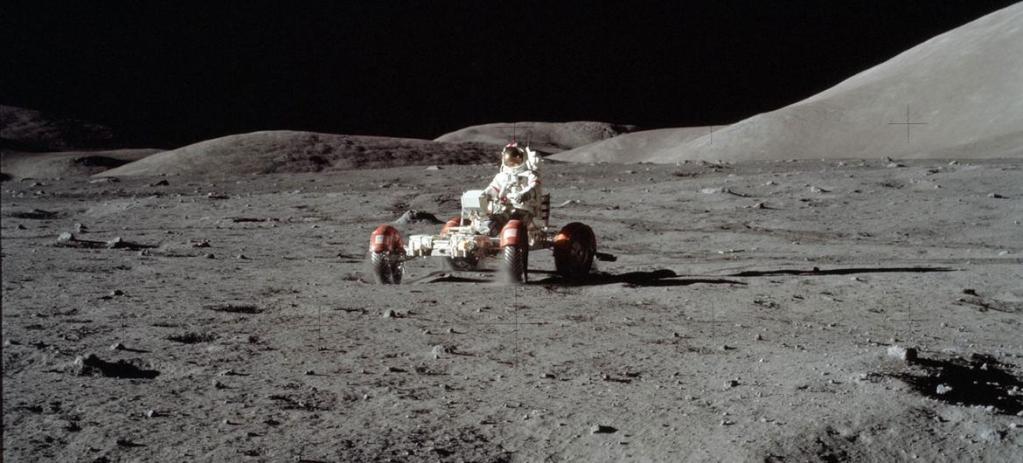
Story
20 June 2025
Marking World Refugee Day with Everyday Heroes
As conflict and crisis continue to uproot lives across the globe, new figures from UNHCR show that more than 122 million people are now forcibly displaced—that’s one in every 67 people on the planet.Against this sobering backdrop, the United Nations in India marked World Refugee Day 2025 a day early—with a simple idea at its heart: solidarity isn’t a slogan, it’s something people practise.Under the global theme, “Solidarity With Refugees: Celebrating Unsung Local Heroes”, the event—titled “Heroes Among Us”—was held in New Delhi on 19 June. Organised by UNHCR India, with the support of UNESCO, it recognised the quiet efforts of individuals who support refugees in their everyday lives—teachers, lawyers, landlords, and neighbours who help people start again with dignity.
Opening the event, Areti Sianni, Chief of Mission for UNHCR India, and Benno Boer, Officer-in-Charge at UNESCO New Delhi called for renewed commitment to refugee protection at a time of unprecedented need.The programme also included a chit-chat style panel discussion, moderated by a refugee from Eritrea. Panelists comprising of refugee leaders, unsung heroes, and friends of UNHCR shared stories of experiences working with refugees —from securing school admissions to helping a refugee walk again. Performance and PerspectiveChildren from the Afghan refugee community opened with a spirited rendition of Salaam Namaste, celebrating connection across cultures. Later, Ms. Madina, a young Afghan poet, delivered a moving original piece that explored identity, exile and the fragile comfort of India’s welcome.A short film, Refugee Resilience, was launched during the event, highlighting how shrinking humanitarian funding is affecting displaced communities, even as needs continue to rise.
Crafts and CuisinesSurrounding the formal programme, refugee chefs and artisans presented their work at pop-up stalls—offering traditional foods, handmade textiles, jewellery, and crafts. It was a reminder that refugees bring not only need, but skill, creativity and cultural richness to host communities. Participants were also invited to share their reflections on a solidarity message board, and to join the #SolidarityInIndia digital campaign amplifying refugee and host community voices.Closing the event, Shombi Sharp, United Nations Resident Coordinator in India, addressed the refugee community directly with a message of deep solidarity: “To the refugees here, and the refugee community represented in this room—we are with you. You are not alone. You are the heroes of this story. You are not unsung. You are the path ahead.”As the world marks World Refugee Day on 20 June, India’s observance offered a clear reminder: behind every displaced person is not just a story of loss—but of resilience. And beside them are people who choose, quietly and persistently, to stand with them.
Opening the event, Areti Sianni, Chief of Mission for UNHCR India, and Benno Boer, Officer-in-Charge at UNESCO New Delhi called for renewed commitment to refugee protection at a time of unprecedented need.The programme also included a chit-chat style panel discussion, moderated by a refugee from Eritrea. Panelists comprising of refugee leaders, unsung heroes, and friends of UNHCR shared stories of experiences working with refugees —from securing school admissions to helping a refugee walk again. Performance and PerspectiveChildren from the Afghan refugee community opened with a spirited rendition of Salaam Namaste, celebrating connection across cultures. Later, Ms. Madina, a young Afghan poet, delivered a moving original piece that explored identity, exile and the fragile comfort of India’s welcome.A short film, Refugee Resilience, was launched during the event, highlighting how shrinking humanitarian funding is affecting displaced communities, even as needs continue to rise.
Crafts and CuisinesSurrounding the formal programme, refugee chefs and artisans presented their work at pop-up stalls—offering traditional foods, handmade textiles, jewellery, and crafts. It was a reminder that refugees bring not only need, but skill, creativity and cultural richness to host communities. Participants were also invited to share their reflections on a solidarity message board, and to join the #SolidarityInIndia digital campaign amplifying refugee and host community voices.Closing the event, Shombi Sharp, United Nations Resident Coordinator in India, addressed the refugee community directly with a message of deep solidarity: “To the refugees here, and the refugee community represented in this room—we are with you. You are not alone. You are the heroes of this story. You are not unsung. You are the path ahead.”As the world marks World Refugee Day on 20 June, India’s observance offered a clear reminder: behind every displaced person is not just a story of loss—but of resilience. And beside them are people who choose, quietly and persistently, to stand with them.
1 of 5
Story
13 June 2025
UN mourns victims of plane crash in Gujarat
More than 240 people have been killed after a passenger aircraft crashed yesterday in the Indian city of Ahmedabad, drawing condolences and messages of solidarity from across the United Nations system.Secretary-General António Guterres said he was "deeply saddened" by the crash, which also killed students and staff on the ground when the aircraft plowed into a medical college hostel shortly after take-off. Only one passenger from the plane is reported to have survived."He extends his heartfelt condolences to the families of the victims and to the people and Government of India, as well as to all countries whose citizens were affected by this tragedy," the Secretary-General’s Deputy Spokesperson Farhan Haq said in a statement.General Assembly President Philemon Yang described the crash as tragic in a post on X and extended his condolences to Prime Minister Narendra Modi and the Indian people.In its own social media posts, the UN in India said it was "heartbroken" by the news and expressed solidarity with the country "in this time of sorrow."The crash, which occurred shortly after 1.30 p.m. local time, involved an Air India flight scheduled to travel from Ahmedabad to London Gatwick. ***
1 of 5
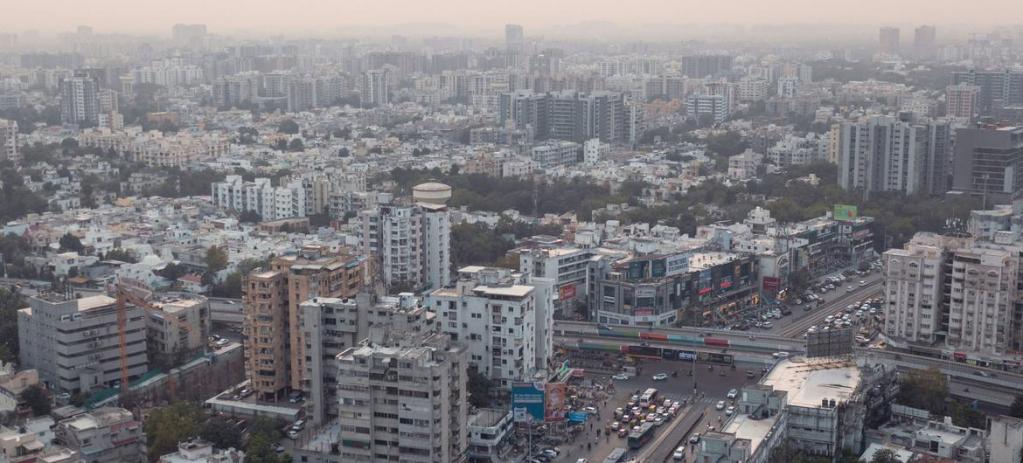
Story
11 June 2025
Odisha and UN Habitat partner on urban planning push
In the coastal state of Odisha, where ancient temples meet modern aspirations, a quiet revolution is taking shape. It's not happening in boardrooms or political halls, but in the very DNA of how cities will be built, lived in, and loved by the next generation.Odisha’s urban population is projected to triple over the next decade. The scale of this shift is expected to place significant pressure on housing, infrastructure, public services, and climate resilience — posing both a challenge and an opportunity for the state’s long-term development.To support this transition, UN-Habitat has signed a Memorandum of Understanding with the Government of Odisha’s Housing and Urban Development Department. The collaboration falls under the newly launched Atal Network for Knowledge, Urbanisation and Reform (ANKUR), aimed at reshaping urban development policy and practice across the state.Launched this May, ANKUR is positioned as a platform for sustainable, inclusive, and innovation-led urban growth, in line with the broader development goals of Viksit Odisha and Viksit Bharat@2047.
As a key knowledge partner, UN-Habitat will provide strategic and technical support to the state government across four focus areas: capacity building, research and knowledge, implementation support, and innovation.
This builds on existing UN-Habitat programmes already active in Odisha, including:Urban RAASTA (Resilient and Accelerated Advancement with Sustainable and Transformative Actions) – a framework for climate-resilient urban planning.Young Gamechangers Initiative (YGI) – empowering urban youth with digital tools, participatory budgeting, and community co-design methods.Circular Economy for Plastic Waste – deploying frontier technologies to upcycle plastics and promote sustainability and livelihoods.The partnership is expected to strengthen urban governance and planning systems in Odisha as it navigates one of the fastest urban transitions in the country.
As a key knowledge partner, UN-Habitat will provide strategic and technical support to the state government across four focus areas: capacity building, research and knowledge, implementation support, and innovation.
This builds on existing UN-Habitat programmes already active in Odisha, including:Urban RAASTA (Resilient and Accelerated Advancement with Sustainable and Transformative Actions) – a framework for climate-resilient urban planning.Young Gamechangers Initiative (YGI) – empowering urban youth with digital tools, participatory budgeting, and community co-design methods.Circular Economy for Plastic Waste – deploying frontier technologies to upcycle plastics and promote sustainability and livelihoods.The partnership is expected to strengthen urban governance and planning systems in Odisha as it navigates one of the fastest urban transitions in the country.
1 of 5
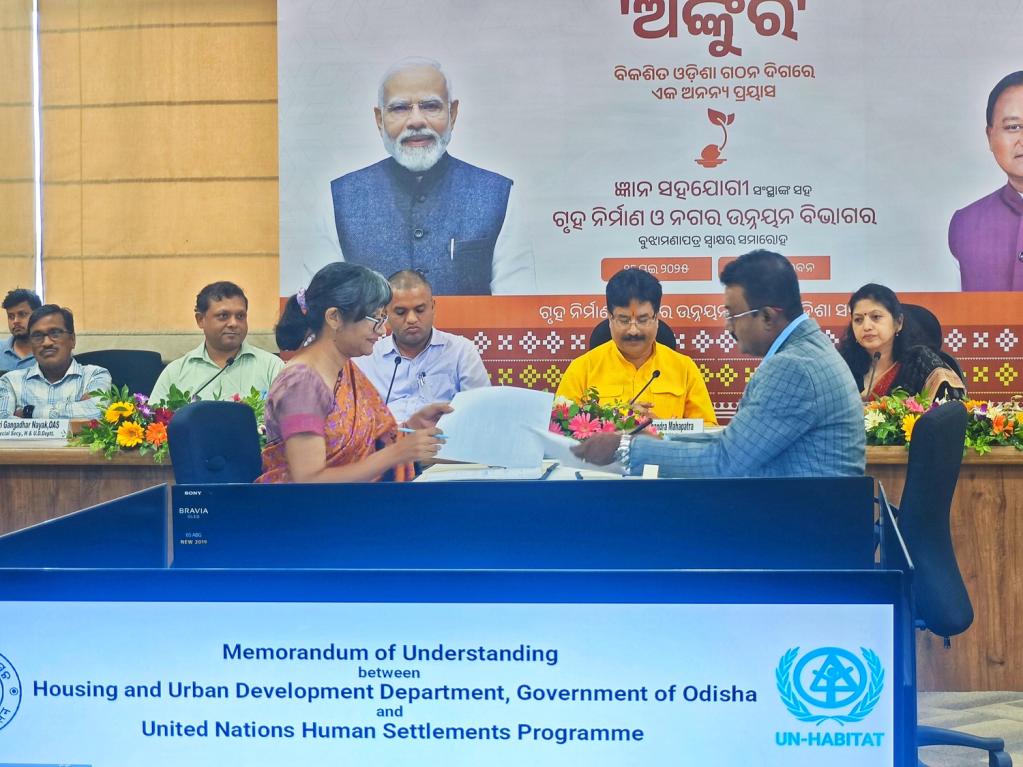
Press Release
08 July 2025
High level Meeting on Zones of Peace
Conflicts are spreading. The use of force is on the rise. The rule of law is under strain, and the multilateral system is facing mounting pressure. There is a clear need for a firm and coordinated response. One grounded in the principles of the United Nations Charter. International law provides the framework for our actions. It is up to us to return to diplomacy, invest in dialogue, and restore trust between States. In September 2024, Member States adopted the Pact for the Future. This marked a renewed commitment to preventive diplomacy and the peaceful resolution of disputes. The Pact identified the need for concrete tools, and Member States pledged to develop mechanisms to that effect. Mechanisms that could advance early warning, confidence-building, crisis response, and sustained dialogue. These efforts are relevant across all levels—subregional, regional, and international. Establishing ‘zones of peace’ offer one such approach. As recognised in Resolution 79/5, adopted during the 79th session, these zones support cooperation and contribute to broader efforts to maintain peace and security. Several are already in place. They include the territories of the Central Asian countries, the South Atlantic, and the Indian Ocean. Latin America and the Caribbean have also been proclaimed as a zone of peace through regional consensus. These initiatives aim to lower tensions, prevent conflict, and create the space needed for dialogue to take root. The challenges we face today reinforce the value of preventive diplomacy and dialogue. These tools must remain at the heart of our work. I encourage Member States to consider how existing zones of peace can be strengthened. We should also explore new partnerships that extend beyond geographic boundaries and reinforce our shared objectives. Through cooperation and trust, we can fulfil our responsibility to protect future generations from the catastrophe of war. Let us take that responsibility seriously. Let us support a global culture of peace. Let us stand against violence and build lasting partnerships grounded in trust, mutual respect, and the principles of the United Nations Charter. Thank you.[END]
1 of 5
Press Release
08 July 2025
Secretary-General: Impact on Human Health is Atrocious
Our environment is being attacked on all fronts: Pollution poisoning land and water. Biodiversity destroyed at an appalling rate. And of course, the climate crisis. Across the world, lives and livelihoods are being ripped apart, and sustainable development gains left in tatters – as disasters accelerate. The impact on human health is atrocious: Extreme heat kills. So does water contamination. Destroyed lands and harvests push up prices and aggravate hunger. Our changing climate inflames the spread of disease – from malaria to dengue fever. The vulnerable and the poorer pay the highest price. And we absolutely need to tackle the point where climate and health meet. And that is where WHO’s role is fundamental. As we speak, emissions keep rising. The 1.5 degree limit is on a knife’s edge. We absolutely need a dramatic reduction in emissions – starting now. The principle of common but differentiated responsibilities must apply, but all countries must make an extra effort. And we must accelerate the pace of the energy transformation with justice, in order to make sure that all countries can benefit. Renewables already largely match fossil fuels in global installed power capacity. And clean energy investments are racing ahead of fossil fuels. Renewables are the cheapest and fastest new electricity almost everywhere. And we can’t forget the 700 million people still without electricity in the world. Renewables boost energy security and sovereignty, liberating countries from volatile fossil fuel markets, connecting people to power in the most remote locations and powering sustainable development. And renewables and electrification don’t churn out toxic air pollution – which today kills seven million people every year. We need governments to build on the progress of last year’s biodiversity COP, particularly reaching an ambitious agreement on finance. We need a legally binding treaty on plastic pollution – this year. And we need to make COP30 a success. I urge you to demonstrate how multilateralism counts, addressing the world's needs in these difficult and divided times. And to come forward by September with ambitious new national climate plans – or NDCs that show the way: That cover all emissions and the whole economy; align with the 1.5 degree limit; and advance the global energy transition goals agreed at COP28. We need to tackle injustices in the critical minerals value chain, and to ensure developing countries receive maximum benefit from their resources, as recommended by the United Nations Panel on Critical Energy Transition Minerals. And we need you standing firm on finance for a just, equitable transition. Developed countries must keep their promises, including the $40 billion a year for adaptation starting in 2025. Adaptation needs are particularly dramatic in developing countries that barely contribute to climate change. We must ensure that the $300 billion a year by 2035 for developing countries agreed in Baku is delivered, and chart a course to raising $1.3 trillion a year, including new and innovative sources of finance and a credible price on carbon. We must bolster South-South cooperation, and improve new models such as the Just Energy Transition Partnerships.And we must fill the coffers of the Fund for Responding to Loss and Damage. Allow me a story. When this fund was created, the pledging conference that took place in the COP resulted in a sum that corresponded to the contract salary of the best well paid basketball player in the United States. This shows that we must be serious when we talk about the Loss and Damage fund. But the problem goes far beyond climate finance. As I said yesterday, we must invest in the reform of the international financial architecture and institutions, take action on debt relief, and triple the finance and capacity of the multilateral development banks to the benefit of developing countries. This is a moment of profound peril and possibility. I urge the BRICS countries to be a pillar of the world’s response in solidarity – for people, planet and prosperity. Thank you.[END]
1 of 5
Press Release
07 July 2025
International Day of Reflection and Commemoration of the 1995 Genocide in Srebrenica
Today marks the 30th anniversary of the genocide in Srebrenica – the worst atrocity on European soil since the Second World War.In July 1995, more than 8,000 Bosnian Muslim men and boys were systematically murdered. Thousands of women, children, and older persons were forcibly displaced, their lives forever shattered. The intention was the elimination of Bosnian Muslims in Srebrenica.We remember the victims and honour the courage of the survivors – including the Mothers of Srebrenica, whose tireless pursuit of justice ensured that the genocide was recognized in both law and history.This day is not only a moment of reflection. It is a call to vigilance and action. At a time when hate speech, denial and division are gaining ground, we must stand firm for truth and justice. We must detect early warning signs and respond before violence takes hold. We must respect international law, defend human rights, uphold the dignity of every individual, and invest in reconciliation and peace.Let the memory of Srebrenica strengthen our resolve, so that “never again” truly means never again.[END] For more information and resources at the following link:https://www.un.org/en/observances/srebrenica-genocide-commemoration-day#:~:text=In%20May%202024%2C%20The%20UN,the%201995%20Genocide%20in%20Srebrenica.
1 of 5
Press Release
07 July 2025
Secretary-General: Reform of the UN Security Council is crucial
Artificial intelligence is reshaping economies and societies. The fundamental test is how wisely we will guide this transformation. How we minimize the risks and maximize the potential for good. I am particularly concerned with the weaponization of AI, in a world where peace is more necessary than ever. Peace in Palestine, based on building the two-State solution, starting by an immediate, permanent ceasefire in Gaza, the immediate and unconditional release of hostages, free and unimpeded humanitarian aid delivery, and the ending of the crippling annexation and violence in the West Bank.A just and sustainable peace in Ukraine, in line with the UN Charter, international law and relevant UN resolutions.Silencing the guns in Sudan, where civilians have also suffered too much.And the list goes on, from the DRC to Somalia, from the Sahel to Myanmar. Artificial intelligence needs a multilateral response grounded in equity and human rights.The Pact for the Future, approved by the General Assembly of the United Nations, calls for a new architecture of trust and cooperation – starting with the establishment by the UN of an Independent International Scientific Panel on Artificial Intelligence. This Panel should provide impartial, evidence-based guidance available to all Member States.The Pact also calls for a periodic Global Dialogue on AI within the UN, with all the Member States and relevant stakeholders. The AI can’t be a club of the few, but must benefit all, and in particular, developing countries which must have a real voice in global AI governance. I will also soon present a report outlining innovative voluntary financing options to support AI capacity-building in developing countries, and I urge the BRICS’ support and your support for these efforts. But we cannot govern AI effectively – and fairly – without confronting deeper, structural imbalances in our global system.We are in a multipolar era. Power relations are shifting. A multipolar world requires multilateral governance – with global institutions tuned for the times, in particular the Security Council and the international financial architecture.They were designed for a bygone age, a bygone world, with a bygone system of power relations. The reform of the Security Council is crucial. The message from the Financing for Development Conference last week in Sevilla was clear:Ensuring that developing countries have a greater participation in global economic governance and its institutions; Putting into place an effective debt restructuring mechanism;And tripling the lending capacity of multilateral development banks, in particular, with concessional funding and in local currencies. All this is crucial for countries, especially in the Global South – to bridge the digital divide and fully harness artificial intelligence’s potential, making AI a powerful driver for inclusive growth and sustainable development.At a time when multilateralism is being undermined, let us remind the world that cooperation is humanity’s greatest innovation. That begins with trust, and trust begins with all countries respecting International Law without exceptions.Let us rise to this moment -- and reform and modernize multilateralism, including the UN and all the systems and institutions to make it work for everyone, everywhere.Thank you.[END]
1 of 5
Press Release
07 July 2025
Ukraine
The Secretary-General strongly condemns the latest series of large-scale drone and missile attacks by the Russian Federation, reportedly the largest in over three years of war. These strikes disrupted the power supply to the Zaporizhzhia Nuclear Power Plant, once again underlining the ongoing risks to nuclear safety.The Secretary-General is alarmed by this dangerous escalation and the growing number of civilian casualties. Attacks against civilians and civilian infrastructure are prohibited under international law and must stop immediately.The Secretary-General reiterates his call for a full, immediate and unconditional ceasefire in Ukraine as a first step towards a just, comprehensive and sustainable peace, in line with the UN Charter, international law and relevant UN resolutions.[END]
1 of 5
Latest Resources
1 / 11
1 / 11

